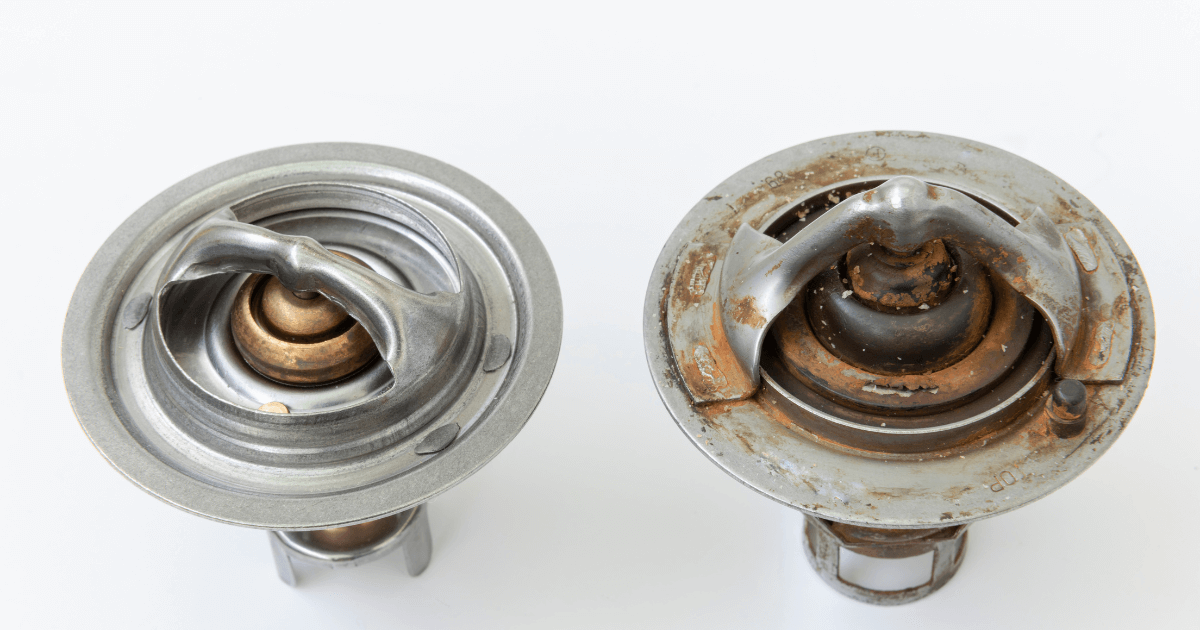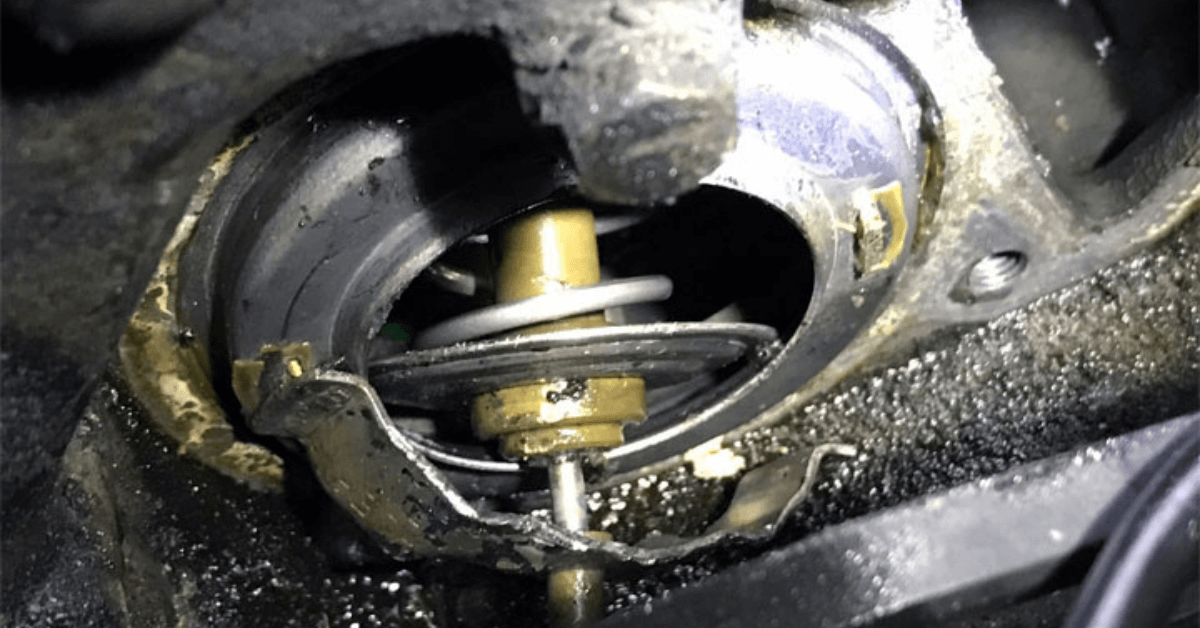Welcome to our blog post on the fascinating inner workings of a car thermostat! Have you ever wondered how your vehicle keeps its engine running at just the right temperature, even during scorching summers or freezing winters?
Well, you’re in luck, because today we’re going to dive into the mechanics behind this essential component.
Whether you’re a curious car enthusiast or simply looking to expand your knowledge, understanding what does a car thermostat do, can provide valuable insights into the engine’s overall performance and efficiency.
Let’s rev up our engines and explore the world of car thermostats together!
How Does a Car Thermostat Work?

In a car, a thermostat acts as a temperature-controlled valve that controls the flow of coolant between the engine and the radiator.
It is a critical component of the cooling system for the engine that makes sure the engine runs within its ideal temperature range.
The process involves controlling the coolant’s flow through the cooling system of the engine.
The thermostat works by opening and closing the valve based on the engine’s coolant temperature. It is closed when the engine is cold, which prevents coolant from passing through the radiator.
This allows the engine to warm up quickly and efficiently, which is important for optimal engine performance and emissions.
The thermostat opens when the engine reaches the desired operating temperature, allowing coolant to flow through the radiator and release heat. This aids in controlling the engine temperature and maintaining it within a set range.
If the engine temperature rises too high, the thermostat fully opens, increasing coolant flow to the radiator and cooling the engine.
If the temperature falls below a certain threshold, the thermostat closes, reducing coolant flow to the radiator and allowing the engine to warm up.
This process is repeated endlessly to ensure that the engine remains within its optimal operating temperature range.
It’s important to note that a faulty or malfunctioning thermostat can cause problems with the engine’s performance and efficiency, so it’s crucial to replace a faulty thermostat as soon as possible, and that is how a thermostat works in a car.
Bad Thermostat in Car?

When the thermostat fails on a car, it can have a variety of consequences. It is recommended to test a car thermostat to save yourself from any costly repairs down the road.
The thermostat is responsible for regulating the temperature of the engine coolant, so if it fails, it can cause the engine to either overheat or not warm up properly.
If the thermostat sticks in the closed position, it will prevent the coolant from flowing through the engine, which can cause the engine to overheat.
This can lead to damage to the engine, such as warped or cracked cylinder heads, and can also cause other problems, such as a blown head gasket.
If the thermostat sticks in the open position, it will cause the engine to not warm up properly. This can cause the engine to run inefficiently and can also cause problems with other parts of the car, such as the transmission.
In either scenario of how a thermostat works in a car, a failed thermostat can lead to decreased performance and efficiency of the car, and can also cause damage to the engine and other parts of the car if not addressed.
Readers may also like: “how to unstick a thermostat in a car?“
Signs Car Thermostat is Bad
A malfunctioning car thermostat can cause a range of issues that are important to recognize and address promptly. Here are some common signs car thermostat is bad/faulty:
- Engine Overheating:
One of the primary functions of the thermostat is to regulate the engine’s temperature. If the thermostat gets stuck in the closed position, it can prevent coolant from flowing properly, leading to engine overheating.
Keep an eye on your temperature gauge—if it consistently shows the engine running hotter than normal, it could indicate a faulty thermostat.
- Cold or Fluctuating Engine Temperature:
On the other end of the spectrum, a thermostat stuck in the open position may result in the engine taking longer to reach its optimal operating temperature.
You may notice that the heater doesn’t produce enough warmth inside the car, or the temperature gauge fluctuates erratically instead of remaining stable.
- Poor Fuel Efficiency:
A malfunctioning thermostat can disrupt the engine’s fuel-air mixture, leading to inefficient combustion.
As a result, your car’s fuel economy may suffer, and you might find yourself making more frequent trips to the gas station without any obvious explanation.
- Coolant Leaks or Puddles:
A failing thermostat can cause coolant leaks due to issues with the thermostat housing, gasket, or housing seal.
If you spot coolant puddles under your car or notice a drop in coolant levels without any visible leaks elsewhere, it’s worth investigating the thermostat as a potential culprit.
- Engine Misfires or Performance Issues:
When the engine is too cold or too hot due to a malfunctioning thermostat, it can result in engine misfires, rough idling, or overall poor performance.
If you experience these symptoms alongside other signs mentioned above, a faulty thermostat could be to blame.
Remember, these signs can also indicate other problems with your car’s cooling system, so it’s best to consult a qualified mechanic to diagnose the issue accurately.
How Much is A Thermostat For A Car?
How much to replace thermostat in car can vary depending on several factors such as the make and model of your vehicle, the location of the thermostat, and labor rates in your area.
On average, you can expect to pay between $150 and $300 for a professional mechanic to replace a car thermostat.
Keep in mind that this estimate includes the cost of the thermostat itself, which typically ranges from $20 to $100, depending on the brand and quality.
Additionally, the labor cost will vary depending on the complexity of accessing the thermostat in your specific vehicle.
It’s worth noting that some thermostats are integrated into larger components like the water pump or housing, which may require additional parts and labor. This can increase the overall cost of the replacement.
Remember that regular maintenance and addressing thermostat issues promptly can help prevent more significant problems with your vehicle’s cooling system, saving you from potentially costly repairs down the road.
How Long Will a Car Thermostat Last?
The lifespan of a car’s thermostat can vary depending on a number of factors, including the make and model of the car, driving conditions, and maintenance practices. In general, a well-maintained thermostat can last anywhere from 5 to 10 years.
However, it is not uncommon for a thermostat to fail earlier, especially if the car is frequently driven in harsh conditions, such as extreme heat or cold, or if the engine experiences frequent overheating due to other issues.
Regular maintenance, such as checking the coolant level and ensuring that the cooling system is functioning properly, can help extend the lifespan of a car’s thermostat.
If a thermostat begins to show signs of failure, such as the engine overheating or not warming up properly, it is important to have it inspected and replaced to avoid further damage to the engine and other parts of the car.
Final Thoughts
Congratulations! You’ve now gained a deeper understanding of how does a car thermostat work and its crucial role in maintaining your engine’s optimal temperature.
Armed with this knowledge, you’ll be better equipped to identify potential thermostat issues and take timely action.
Remember, a properly functioning thermostat helps promote fuel efficiency, prevents engine overheating, and ensures a smooth and reliable driving experience.
If you notice any signs of a malfunctioning thermostat, don’t hesitate to consult a qualified mechanic to diagnose and resolve the issue.








Pingback: How To Unstick A Thermostat In A Car? | Meta Domotics
Pingback: How To Test A Car Thermostat? | Meta Domotics